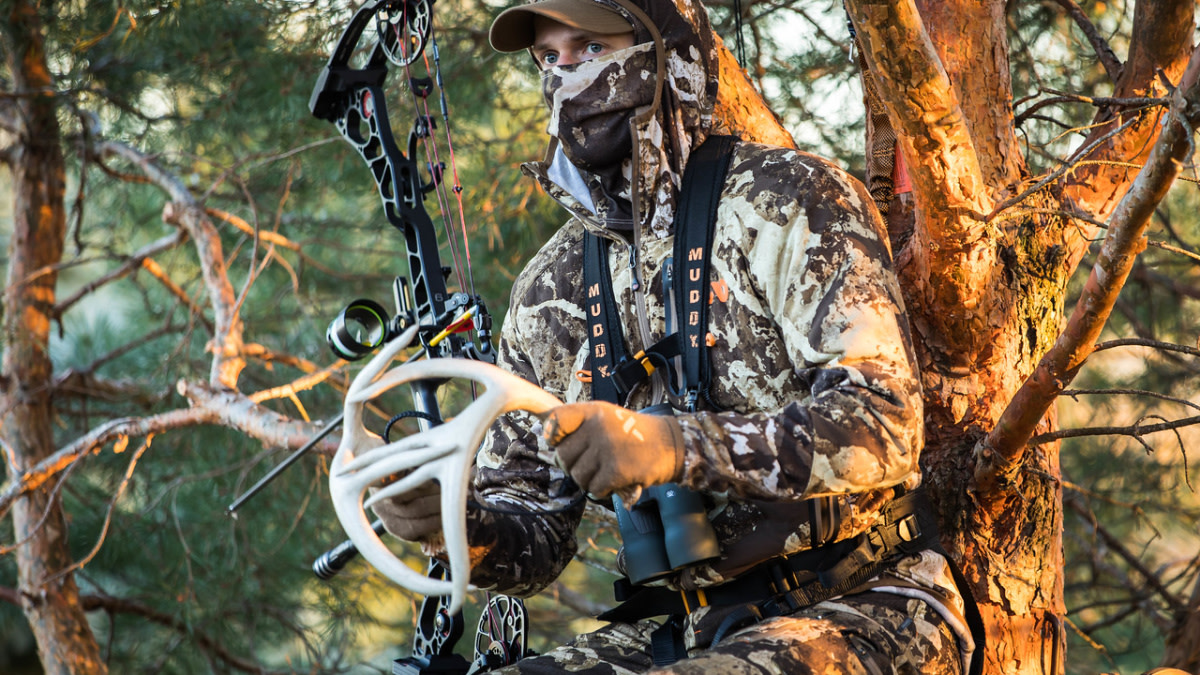
The first two weeks of November are without a doubt the best days to be in the woods if your goal is to kill a mature buck. That’s Whitetail 101 stuff, but it’s still not a simple proposition. Just because daylight movement ramps up and bucks are throwing caution to the wind doesn’t mean killing is a sure thing.
In some ways, the rut is hard on some hunters because it gives them too much hope that whatever issues they had filling tags earlier in the season will disappear. Those issues won’t go away. If you’re solely counting on breeding to solve your deer hunting problems, you’ll probably be disappointed. A big part of this problem stems from not really understanding what the bucks are doing during the rut.
Not Hunting Cover
Deer hunters love a good view, but deer love not getting shot in the lungs. Any buck living on heavily hunted ground learns pretty quickly where the pressure is concentrated, just like the does that are tasked with raising new generations of deer.
Tim Kent, a land specialist with Whitetail Properties, uses this knowledge to his advantage at home in New York and New Jersey. “I think a lot of hunters don’t really understand doe bedding areas or how bucks scent check them,” Kent said. “It’s common to believe that bucks just walk straight into the wind to smell danger or does ahead of them, but that hasn’t been my experience during the rut.”
Instead, Kent notices that bucks often travel parallel to the wind so they can see danger ahead and smell doe bedding as they cruise. They do this, he notes, while staying in the cover so that their daytime travels don’t bring them into more dangerous openings, but they can still put on the miles necessary to find a girlfriend.
“This tendency is why I like to hunt thick cover during the rut, where the terrain and the wind direction force bucks to move a certain way,” Kent said. “This allows me to set up in tight spots where bucks have to work to find does, but also where they are likely to be on the move any time of the day.”
So although the rut makes for a damn good show, make sure you’re set up to kill deer, not see deer. This might mean you have to sit in cover for hours on end and not see a single deer, just waiting for the right buck to walk by.
Not Hunting Patterns
Kent’s point about bucks paralleling bedding cover while working the terrain is something I’ve seen over and over during the rut on public lands. It’s so reliable that after enough observation you can almost call your shots and pick your stand sites based on the day and the wind direction.
This is important because it’s easy to assign a high level of randomness to the rut, but nature doesn’t really work that way. A study conducted in Texas with radio-collared mature bucks showed that 10% of them didn’t have any sort of pattern during the rut. The other 90% stuck to a strategy of either cruising a couple of doe bedding areas for a set amount of time or sticking tight to doe groups while waiting for one of them to come into estrus.
What this means is that you might catch a glimpse of a buck doing something that just doesn’t seem to make sense, but if you spend enough time in a tree during November you’ll notice patterns to their behavior. This peels away the layers of randomness to reveal why bucks travel certain areas: to rack up as many conquests as possible throughout the short breeding window.
This knowledge can be applied day to day and year to year during primetime in November. But even that isn’t enough sometimes.
Not Hunting Enough
All-day sits are discussed in a similar fashion to eating right and exercising. As with all obvious, beneficial choices, we tend to speak of them in a way that is divorced from practical application. Most hunters don’t have the discipline to sit all day; so most hunters don’t.
A few hours in the morning and a few hours at night, if it’s all you can handle, can still result in grip-and-grin photos. But to truly capitalize on the rut, you’ve got to put in your time. I ran into this while hunting public lands in North Dakota last year. I picked a spot on onX and set up shop for four days. From dark to dark I sat in a pinch point. Through three days, I only saw a last-light forky.
The following morning, 15 minutes into shooting light, I killed a Pope & Young eight-pointer. That’s how the rut works and that’s the beauty of it but, just like all difficult tasks, you get out what you put in. The most consistently successful hunters on pressured lands put in the time to scout and hunt.
It’s not as easy as it sounds, but that’s what makes it special when a hunt comes together. Just keep things simple during the rut: get in the right place for the right reason at the right time. Don’t let randomness or stand fatigue keep you from killing a buck during the best time of the season.
Feature image via Captured Creative.





